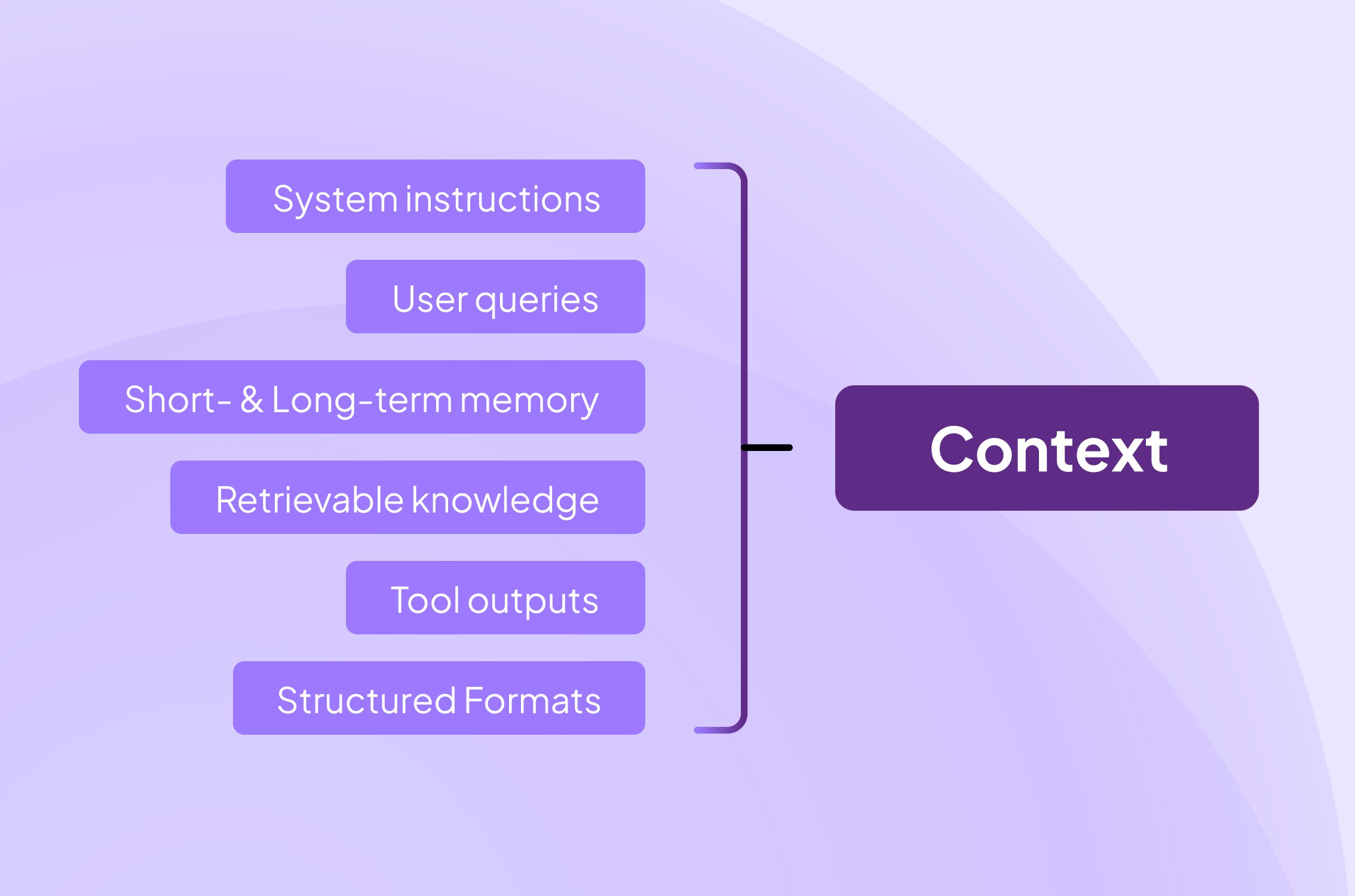Context Engineering: Why AI in Business Doesn’t Work Without Context

AI has already become part of the daily routine in many companies. But in practice, the results often fall short of expectations. Teams struggle with generic outputs, vague responses, or a lack of traceability. The reason? In most cases, AI is missing the one thing it needs most: context—the knowledge, rules, and language that truly matter to your business.
Context Engineering is All About Relevance and Quality
What is context engineering?
Context engineering ensures that AI receives exactly the information it needs—at the right time and in the right amount.
Your context might include:
- Internal business data (e.g., guidelines, processes, product knowledge)
- External sources (e.g., new legislation, industry updates)
- Situational info (e.g., roles, tasks, project status, teams)
From Prompt to Context
Example 1: Technical Support – Prompt Overload vs. Context Engineering
The Prompt-Based Approach (without context engineering):
“You are a support agent responding to a customer inquiry about Machine X. Please consider our current support processes, product specifics, warranty policies, compliance requirements, and corporate language. Here are all the relevant documents…”
The problems?
- Prompts get bloated and error-prone
- Changes in rules or processes must be updated manually
- Leads to inconsistent responses and time loss
Please respond to the support request regarding Machine X from [customer name] in accordance with all current guidelines and policies.
Example 2: Marketing & Communication
Companies also benefit enormously in marketing: campaign guidelines, target audience profiles, product messages, and corporate language are automatically embedded by nuwacom in every text suggestion—regardless of whether it is written by a human or an AI agent.
Why Context Matters: The Business Benefits
-
Better results: AI understands your specific business, not just generic patterns
-
Compliance & Security: Data privacy and company policies are built in
-
Efficiency: Speeds up workflows and reduces manual effort
-
Scalability: New use cases or departments are easy to onboard
-
Knowledge retention: Your business know-how becomes a scalable digital asset
Key Elements of Successful Context Engineering
- Retrieval-Augmented Generation (RAG): AI automatically accesses relevant data sources.
- Memory Management: Personalizes responses using user history and preferences
- API Integration: Syncs with your CRM, ERP, HR, and more
- Role-Based Context: Adapts to the needs of each user or department
- Guidelines & Briefings: Centralizes communication rules and content styles
- Data Governance: Ensures transparency and compliance at every step
Building an Effective Context System
A great context system is modular, dynamic, and tailored to the task at hand. It includes:
- System instructions (e.g., “act as a support agent”)
- User queries (what needs to be done)
- Short- & long-term memory (relevant past and current info)
- Retrievable knowledge (documents, databases, external data)
- Tool outputs (APIs, calendars, emails, etc.)
- Structured formats (lists, tables, JSON…)
The key?
Context isn’t hardcoded. It’s built on demand, depending on what the model really needs to solve a task. This ensures top performance and maximum efficiency—every time.
Organization, Change & Common Pitfalls in Context Engineering
- Cross-functional collaboration is essential: IT, business, compliance, and context engineers must work together.
- Mindset shift: Context and company knowledge are assets that must be managed.
- Change management: Teams should be involved early and understand why context matters.
Common mistakes—and how nuwacom prevents them:
- Too much context: Leads to vague or bloated answers
- Outdated data: Puts compliance and decision-making at risk
- No governance: Who can use what info becomes unclear
- Missing feedback loops: The AI stops learning.
The Future: Context Engineering as a Success Driver
As AI agents and automation become the norm, context engineering will be a must-have competency in every organization.
Only companies that ensure their AI operates with the right context, rules, and knowledge will stay ahead—and gain a true competitive edge.
How to Get Started: 7 Steps to Kickstart Context Engineering
1. Identify your use cases
Where is AI already in use or planned—e.g., customer service, marketing, HR? Where are prompts too complex or info missing?
2. Analyze your knowledge sources
3. Set up a context team
4. Choose the right platform
5. Start small, scale fast
Launch a pilot project and test how structured context boosts quality and efficiency—then roll it out to other departments.
6. Build Feedback Loops & Scale Continuously
7. Treat context engineering as an ongoing discipline, not a one-time project
Maintain clarity around roles, responsibilities, privacy, and compliance.
How nuwacom Makes Context Engineering Easy
Key features:
- Briefing function: Create reusable briefings and add them as contextual input. Even slides or memos can be context sources.
- Context from all sources: Internal docs, processes, emails, product info, external data—nuwacom connects over 200 APIs and integrates a real-time search engine.
- Role-specific & compliant: Permission systems ensure only authorized users access and apply the right context.
- Guideline feature: Easily set and enforce your brand voice and messaging rules. The AI automatically applies them to every output—whether for customer service, marketing, or knowledge management.
- Plug & play: Integrate into your existing systems without complex IT projects. Context updates are simple and intuitive.
- Instant business impact: Get AI agents up and running in HR, sales, marketing, service, and beyond..
Conclusion
To succeed with AI in your business, context engineering must be part of your strategy. With nuwacom, you can make it happen—effortlessly, transparently, and with future-proof impact.
Mini Glossary
| Term | Meaning |
|---|---|
| Prompt | The actual input or instruction you give the AI |
| Context | All background information the AI receives to complete its task |
| RAG | Retrieval-Augmented Generation—a technique to connect AI to your data |
| Vector Store | A database that allows fast, semantic search through your knowledge |
Curious to see how context engineering works in real life?
Get in touch and experience nuwacom in action!
Follow us on LinkedIn